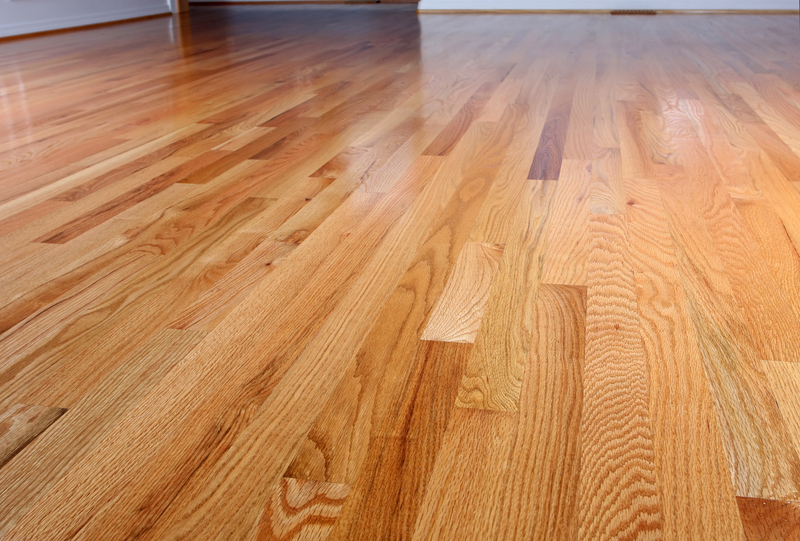Upgrade Your Home with Sustainable Style: Natural Fibre Carpets Explained
Posted on 25/09/2025

In today's world, consumers are becoming increasingly aware of the impact their choices make on the environment. This has led to a growing demand for sustainable and eco-friendly products in various industries, including home improvement. When it comes to upgrading your home, one area that often gets overlooked is flooring. While hardwood and synthetic carpets have been popular options for many years, natural fibre carpets are gaining popularity for their sustainable benefits. In this article, we will explore the different types of natural fibre carpets available and why they should be considered for your home.
Types of Natural Fibre Carpets:
Jute Carpets:
One of the most commonly used natural fibres in carpet production is jute. It is a shiny and silky plant fibre that is native to Southeast Asia and India. Jute carpets are known for their strength and durability, making them ideal for high traffic areas such as hallways and living rooms. They also have a unique texture that adds a touch of warmth and coziness to any room.
Sisal Carpets:
Another popular option for natural fibre carpets is sisal, which comes from the agave plant. Sisal carpets are known for their resilience and ability to withstand heavy foot traffic. They are also resistant to stains, making them an excellent choice for homes with pets or children. Additionally, sisal carpets have a neutral color palette that can easily complement any home decor style.
Wool Carpets:
Wool carpets have been a staple in homes for centuries due to their softness, durability, and insulating properties. Wool comes from sheep, making it a renewable resource that can be sustainably harvested without causing harm to animals or the environment. Wool carpets come in a variety of colors and patterns, offering endless design possibilities for your home.
Coir Carpets:
Derived from the outer husks of coconuts, coir carpets are another eco-friendly option for flooring. They are made by weaving together the tough fibres of the coconut husk to create a strong and durable carpet. Coir carpets are a popular choice for entryways and mudrooms as they can easily withstand dirt and moisture.
Why Choose Natural Fibre Carpets?
Sustainability:
One of the main reasons to choose natural fibre carpets is their environmental sustainability. These carpets are made from renewable resources that have a lower impact on the environment compared to synthetic options. The manufacturing process also involves fewer chemicals, making them better for indoor air quality.
Durability:
Natural fibre carpets are known for their durability and longevity. They can withstand heavy foot traffic, making them an excellent choice for busy households. Additionally, these carpets can be easily maintained with regular vacuuming and occasional professional cleaning, ensuring they last for many years.
Comfort:
Another benefit of natural fibre carpets is their comfort underfoot. Wool carpets, in particular, have a soft and plush feel that adds warmth and luxury to any room. They also have excellent insulating properties, which can help reduce energy costs by keeping your home warmer in the winter and cooler in the summer.
Design Versatility:
With a wide range of colors, patterns, and textures available, natural fibre carpets offer endless design possibilities for your home. Whether you prefer a rustic look or a more modern aesthetic, there is a natural fibre carpet to suit your style. You can even mix and match different fibres for a unique and personalized look.
Pros and Cons of Natural Fibre Carpets:
Pros:
- Environmentally sustainable
- Durable and long-lasting
- Comfortable underfoot
- Design versatility
- Low maintenance
Cons:
- Can be more expensive than synthetic options
- Some fibres may be prone to staining or fading if not treated properly
- May require professional cleaning for tougher stains
Tips for Choosing Natural Fibre Carpets:
1. Consider the location: Before choosing a natural fibre carpet, consider which room it will be installed in. Different fibres have varying levels of durability, so you want to make sure it can withstand the foot traffic in that particular area.
2. Research maintenance requirements: While natural fibre carpets are generally low maintenance, some may require special care depending on the type of fibre and weave. Make sure you are aware of any specific cleaning or maintenance instructions before making a purchase.
3. Compare prices: Natural fibre carpets can be more expensive than synthetic options, so it's worth comparing prices from different retailers and considering sales or discounts.
Takeaways:
Investing in natural fibre carpets not only adds style and comfort to your home but also contributes to a more sustainable future. These carpets offer a range of benefits, from durability and design versatility to environmental sustainability. By choosing natural fibre carpets, you are making a conscious choice to support eco-friendly practices and reduce your impact on the environment.
In Conclusion:
Upgrading your home with natural fibre carpets is an excellent way to add sustainable style to your living space. Whether you choose jute, sisal, wool, or coir, these carpets offer a variety of benefits that make them a great investment for any home. Consider the location, maintenance requirements, and price when choosing the perfect natural fibre carpet for your space and enjoy the many advantages they offer for years to come. So why settle for synthetic when you can upgrade your home with sustainable style? Choose natural fibre carpets today!









